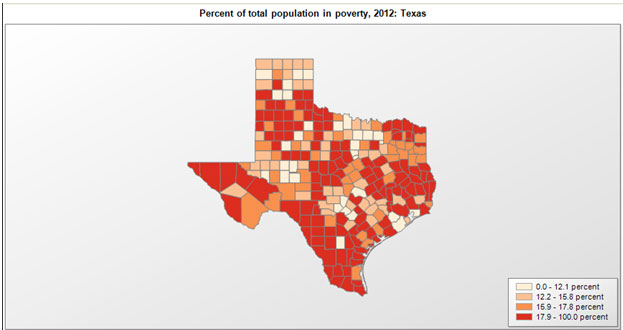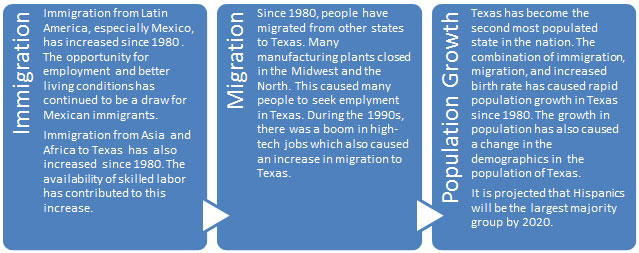
Source: Map, U5XxjCgkQ-U, U.S. Department of Agriculture
In the previous section, you learned that there were many industries that created jobs in Texas during the late 20th century and the early 21st century. Even with all of the opportunities available to Texans, the state has one of the highest rates of poverty in the nation.
Since 1980, Texas has had the largest population living in poverty than the U.S. average. According to the Texas Food Bank Network:
“Almost one in five (18.5%) Texans lived below the poverty level (e.g., a family of four earning less than $22,811 per year) last year, according to the 2011 American Community Survey. Even more alarming, over one in four (26.6%) children in Texas lived in poverty.”
Take a look at the map below that provides the location of the counties with the highest populations of poverty.

Source: Map, U5XxjCgkQ-U, U.S. Department of Agriculture
Analyze the map, and answer the question that follows in your notes.
Interactive popup. Assistance may be required.
The range of 17.9 to 100 percent poverty is the most abundant in Texas.

Source: Panorama from hotel in San Antonio, Theopolisme, Wikimedia
According to the Federal Reserve Bank of Dallas, those in poverty live all across Texas. Since 1989, San Antonio and Houston have had a higher average of poverty than any other major U.S. city.
During the 1990s, poverty in major cities along the border (McAllen, Brownsville, El Paso, and Laredo) increased, even as the state’s economy increased. In 1999, the population of Texas living below the poverty level was 15.4 percent.
Besides poverty, there are other social changes that Texas has faced since 1980.
